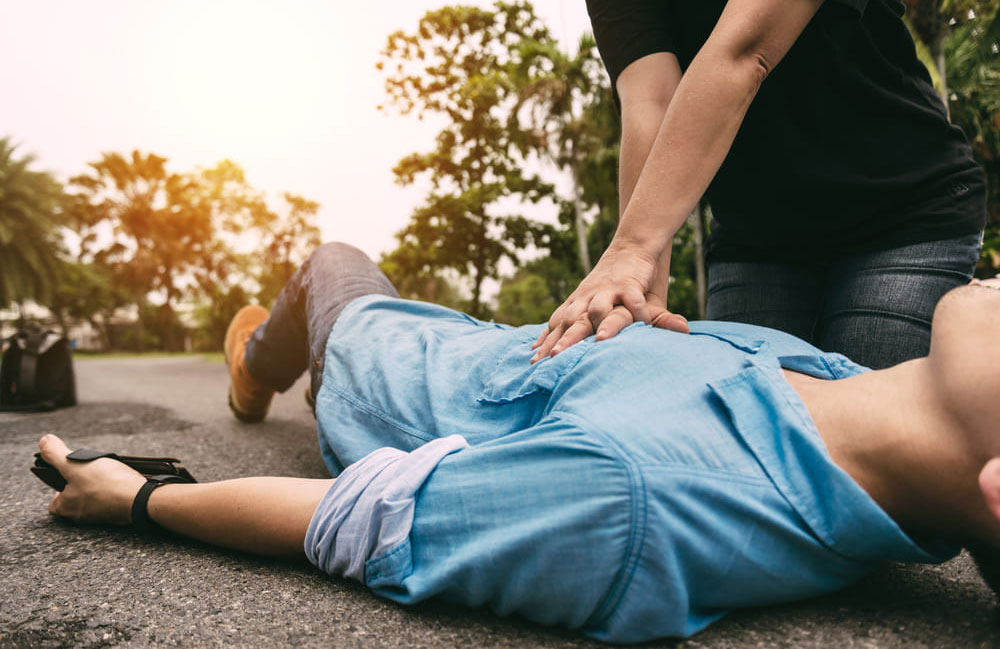


Every minute counts when a heart stops beating. In these life-or-death moments, a simple yet powerful technique can make the difference between life lost and life saved.
Cardio Pulmonary Resuscitation (CPR) is more than just a medical procedure – it’s a lifeline.
When administered promptly and correctly, CPR can double, or even triple, a victim’s chance of survival from sudden cardiac arrest. Yet, despite its life-saving potential, many remain unaware or untrained.
It’s not just a skill for medical professionals alone – it’s knowledge every individual should possess, turning ordinary people into potential life savers.
According to Surefire CPR, quoting the American Heart Association (AHA), CPR’s inception dates back to 1740, when the Paris Academy of Sciences recommended mouth-to-mouth resuscitation for drowning victims. However, it wasn’t until the mid-20th century that modern CPR, a combination of chest compressions and rescue breaths, began to take shape.
According to Paul Martin, writing in ProCPR, it was Drs. James Elam and Peter Safar who perfected this technique in the 1950s, emphasizing the importance of keeping oxygenated blood flowing to the brain and vital organs during cardiac arrest.
By the 1960s, the American Heart Association started promoting CPR to the American public, heralding a new era where medical professionals and everyday citizens could be armed with the knowledge to save lives.
As research expanded and findings emerged, the methods used for CPR have become more refined, catering to a broader spectrum of cardiac emergencies.
The greater incorporation of automated external defibrillators (AEDs), the emphasis on high-quality chest compressions, and the training of more non-medical citizenry in CPR are just a few of the transformative changes that have occurred.
These adaptations have made CPR more effective and underlined its indispensable role in emergency medicine. Today, CPR is not just a tool for healthcare professionals but an essential skill for everyone, demonstrating its unparalleled importance in saving lives during critical moments.
Despite CPR’s proven effectiveness in saving lives, a surprising number of individuals remain unfamiliar with its techniques. According to CPR Select, there is a very disheartening statistic: “45% of men receive CPR assistance in public after sudden cardiac arrest compared to women, which is only 39%. This means men are 1.23 times more likely to receive help from bystanders, and their chances of survival are 23% higher than women.”
This overall shortfall – and its gender skew – underscores the critical gap in widespread human resource training and readiness in CPR.
On the other hand, technological advancements have increased the use of sophisticated CPR-assistance devices. Plus, there are now some valuable simplifications recommended for the CPR technique.
For example, according to Emergency First Response, the International Committee on Resuscitation (ILCOR) announced a new recommendation in 2020: hands-only CPR (no mouth to mouth) for non-drowning victims.
(This diktat proved to be a boon during the Covid-19 pandemic when mouth-to-mouth resuscitation became impossible.)
As greater awareness and interest in CPR percolates, a new breed of hero is emerging: the “Heartstrong Hero.” This term isn’t reserved exclusively for professionals in medical fields. Instead, it refers to everyday individuals who, armed with the knowledge of CPR, possess the power to save a life.
These heroes might be teachers, students, parents, or colleagues – the unassuming faces we see daily. When seconds count, and lives hang in the balance, these “Heartstrong Heroes” step forward, transforming their essential CPR knowledge into direct action.
They are the ones proving to the rest of us that true heroism is not about remarkable abilities but about making extraordinary decisions in pivotal moments.
While individual efforts in CPR training have made strides, we are seeing a growing number of young and energetic “Heartstrong Heroes.” But, we still need a coordinated national movement to amplify these efforts exponentially. The numbers of those trained formally in CPR are still dismally low in India.
According to Sreemoy Chatterjee, writing in The Times Of India, quoting a survey by Lybrate: “98% of the country’s population is not trained in the basic life-saving technique of Cardio Pulmonary Resuscitation (CPR).”
We must standardize training to ensure broader reach and increase public accessibility to life-saving tools. Such a movement would foster a culture of preparedness and create a collective sense of responsibility.
In a not-too-far-off future, we can imagine becoming a nation where every citizen, regardless of age or profession, is equipped with the knowledge to intervene during a cardiac emergency – and becomes a genuine “Zinda Dil”. But this vision must not remain an aspiration – it should become a necessity. Widespread CPR training can dramatically shift survival statistics in our country in a positive direction.
To galvanize a national CPR movement and truly become a Heartstrong Heroes’ nation, we should all commence on a deliberate and strategic path, which could incorporate ideas like these:
Embarking on a national CPR movement is more than just equipping individuals with a life-saving skill—it’s about fostering a culture of readiness, responsibility, and communal care.
As we champion better CPR training countrywide, we pave the way for a nation where every citizen is a guardian of their health and a potential lifesaver for others.
As citizens of a progressive nation like India, everyone can (and must) choose to learn CPR skills at the next available opportunity. Do it for yourself, for others, and for the nation. Become a Heartstrong Hero.